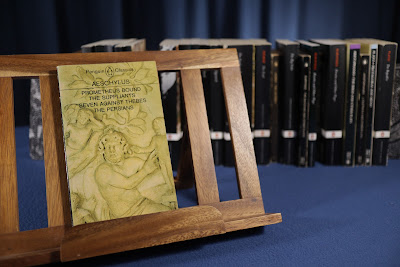Long Easter weekend is here. It's nice to have a bit of a break. training has been brutal but its nearly over. Now it's just onto racking up the on the job learning.
The Story
Antigone is set after the fight at Thebes that we see in Seven Against Thebes, and deals with the aftermath of this fight. Both brothers, Eteocles and Polyneices, are dead but the new king Creon has only buried Eteocles and has banned anyone from burying Polyneices. The play starts with Antigone speaking with her sister about burying her brother Polyneices and that she can not bear to see him stay unburied. Her sister washes her hands of it and will have no part in the burial.
Antigone goes and buries her brother in secret but the guards uncover him. Antigone is caught reburying her brother and is executed for disobeying the king. Her fiance, saddened by the news, kills himself. Her mother on learning of this, also kills herself.
Reflections
Antigone is a dutiful sister and sees her tie to her brother as more important than her tie to the king. By contrast, her sister wants to please the king, this is her highest want, even at her own brothers expense. This contrast is rather stark and makes the reader or viewer think about their own allegiances. The suicides in the play feel a little melodramatic, but then this is Greek tragedy, I guess.
The first especially, I know he was her fiancee, but it still seems a little extreme and quite abrupt as we do not see a huge amount of him in the play.
Comparisons
In the sense that all things end in death we can compare it to any other Greek tragedy like Seven Against Thebes. In fact, it's the deaths at the end of Seven Against Thebes that are the catalyst for the drama of this play. In some ways we see a lot of modern stories similar to Antigone with the protagonist deciding to do what they believe is right over what has been set out by authority.
Have you read Antigone? If so what did you think of it?
Want to read Antigone but haven't? Hopefully this inspires you to take the time to do so.
Get a copy of Antigone.
Get a copy of Antigone.







